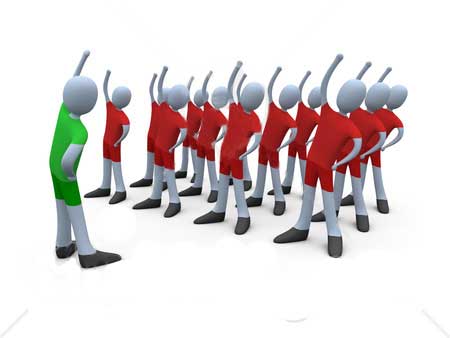A good exercise program includes cardiovascular exercise, muscular conditioning and flexibility exercises. The best cardiovascular exercises for seniors are non-jarring, such as walking, swimming and cycling. Start with a light regimen and gradually build up to a total of at least 30 minutes of activity on most, preferably all, days of the week. Playing with children, gardening, dancing and housecleaning are other ways to incorporate activity into your daily routine. Strengthening exercises such as lifting light weights help to maintain your muscle mass and promote bone health. Plus, research suggests that adults older than 50 years who do not perform resistance training lose nearly 1/4 pound of muscle mass per year. Since muscle mass is directly related to how many calories your body burns each day, resistance training is important for weight management. And strong leg and hip muscles help to reduce the risk of falls, a cause of considerable disability among older adults. Aim to participate in resistance training at least two days per week, making sure to exercise all major muscle groups through a full range of motion.
End each workout with stretching exercises to help maintain your mobility and range of motion and decrease your risk for injury. Good news for older adults: part of the prescription for a healthier, better retirement is exercise. Physical activity protects against declining health and fitness and adds years to your life. Join the growing number of older adults who are actively demonstrating that exercise helps keep a body strong.Choose activities you enjoy. Make being fit part of your everyday life. Playing with children, gardening, walking, dancing, and housecleaning are just a few activities that can improve your fitness. Combine a range of activities that include aerobic activity (see below), strengthening, flexibility, and balance. Start slow and gradually build up to a total of at least 30 minutes of activity a day on most days of the week. Activities can be broken up throughout the day. Keep safety in mind. Always wear comfortable, well-fitting shoes and use appropriate safety gear. Avoid outdoor activities in extreme cold or heat. Drink plenty of fluids while engaging in physical activity.
We are all getting older. But some of us are staying stronger longer Flexibility and balance exercises will keep your joints healthy and mobile, reduce your risk of falling, and help you stay independent.
Aerobic exercise will reduce your risk of heart disease, high blood pressure and type II diabetes.
Resistance exercises will make your muscles and bones stronger, allowing you to do daily activities easier and reduce your risk of developing osteoporosis.
Being active every day will improve your mental agility, memory, and mood, promote relaxation, and reduce your stress!


